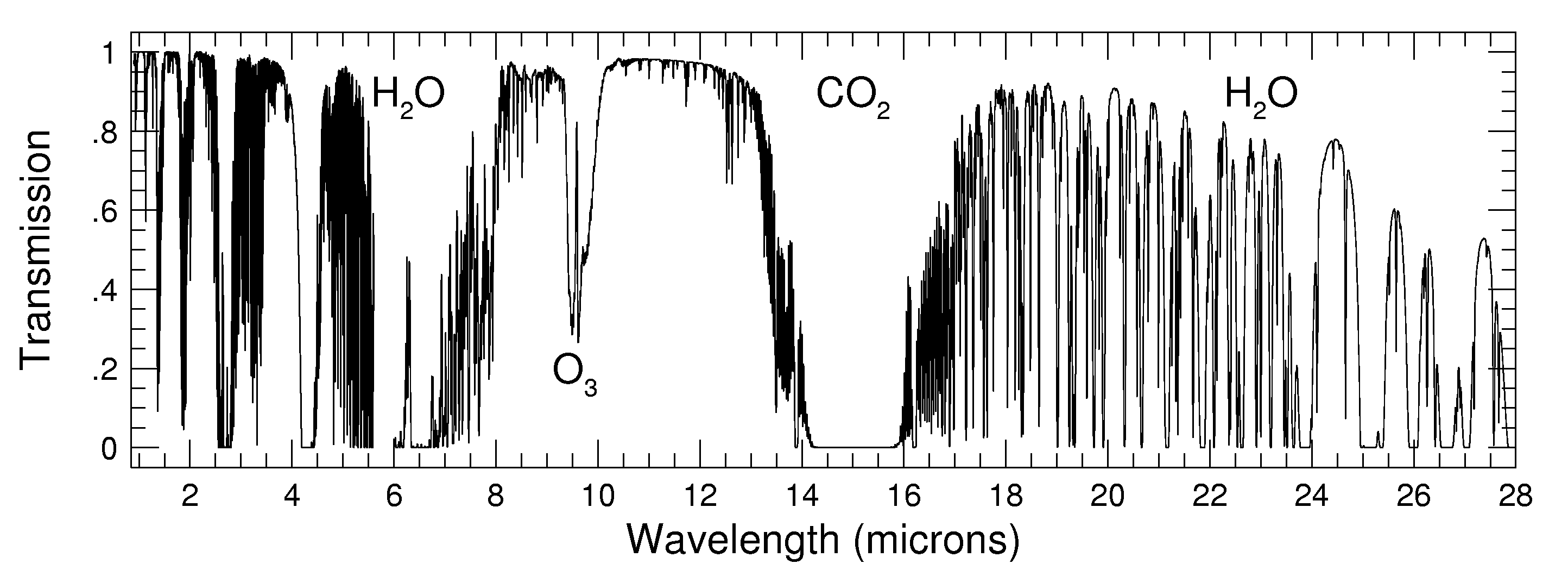what would happen to earth global temperatures when there were no radiative active gasses in the atmosphere, let's say a pure nitrogen atmosphere?
I imagine, based on my understanding of the Stefan-Boltzman law, taking into account the earths albedo and emissivity, and assuming the atmosphere is completly transparent to longwave IR radiation, that the earth would cool by some value less than it's current value, but such that the out going radiation (reflected + Emitted) is equal to the incoming radiation recieved by the sun (as required by the conservation of energy). I would also expect that some parts of the surface would be hotter than the earth's effective temperature, and some parts would be cooler, giving an average temperature close to the effective greybody temperature.
Here is my take.
If there are no radiative active gasses in the IR spectrum, the only way that the atmosphere can exchange energy is conduction with the surface. whenever the boundary layer of atmosphere has a different temperature than the surface. Internally within the atmosphere, there can also be heat transport by advection and convection, but there is no out radiation by definition.
Another element, not always found in models, is the diurnal cycle. Earth is
not getting, some 340 W/m^2 energy on the average. Instead, at the day side of the planet there is anything from 0 to some 1360 W/m2, while at the night side it is zilch, not counting cosmic background radiation. If you apply Stefan Boltzmann on a grey body with the normal albedo/reflectivity, the absorption-emission equilibrium temperature of the zenith spot on Earth is close to boiling temperature, like it is on the moon.
So, at the day side, especially at that near boiling hot spot, the incoming short wave energy is converted to heat and consequently to long wave radiation out as well as thermal conduction to lower layers and thermal conduction to the lowermost boundary layer of the atmosphere. As this boundary layer becomes less dense with warming, it starts a convection cycle, the effectiviness depending on lapse rates and adiabatic expansion and compression (only dry adiabats for N2 as there is no water vapor in our greenhouse gas less null hypothesis), the main thing is though that thermal energy is entering the atmosphere and penetrates higher levels by convection.
So the planet rotates and soon this spot is at the night side. The earth surface is now still losing thermal energy by radiation. As the surface cools, so does the lowermost atmospheric boundary layer. So that gets denser and therefore stays put. We see that on real earth also as a
thermal ground inversion.
But this inversion also blocks heat exchange with higher atmospheric layers, which again, can only exchange thermal energy via conduction with the ground. No radiation out to space, no radiation to the surface. Hence most of the thermal energy that goes into the atmosphere at daytime stays there at night time, there is no negative convection.
So we have an unbalance in the atmosphere here, a certain amount of energy in at daytime, and hardly any out at night time. Balance will be restored when the atmosphere contains so much thermal energy that convection is suppressed and limited to what can be re-conducted out at night time.
At what thermal energy content for the amosphere is a guess, a challenge for modellers, but I doubt if it's lower than the current energy content of the atmosphere. So maybe an inert atmosphere is warmer than an atmosphere with radiative properties.
If this sounds toe curling counter intuitive, please don't shoot the messenger, just go over the logic and challenge it. There is plenty to discuss.



